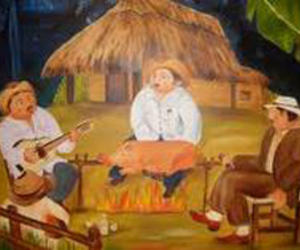A Cuba story
- Submitted by: manso
- Editorial Articles
- 03 / 25 / 2011

Published: Wednesday, March 23, Putting Down Roots, by Cliff Johnson. I was in junior high school when Fidel Castro led a guerrilla army through the mountains, towns and sugarcane fields of Cuba to defeat the corrupt Batista government. Since that successful revolution in the late 1950s, Americans haven't had much of a view into this 750-mile-long island just 90 miles south of Miami.
I spent eight days in Cuba in mid-February, traveling more than 1,000 miles by bus, and met hundreds of Cuban people. It turns out the Cuban people have about as many misconceptions about Americans as we have about the 11 million occupants of this Communist country.
I was part of a 12-person church group that traveled on a religious visa -- one of the only options for visiting Cuba due to the trade embargo (Cubans call it a "blockade") that has been in force for 50+ years.
Cuba is a beautiful country that reminded me a lot of Costa Rica, which I have visited two times. One of the similarities with Costa Rica that I noticed every day out the bus window is "living fence posts." Most fields are fenced in with barb wire connected to posts that are cut-off 3-inch diameter tree trunks that begin sprouting new leaves soon as they are stuck into the rich volcanic soil.
Cuba used to be one of the world's largest sugar producers. While we saw hundreds of acres of sugar cane, the industry is only a shadow of its former stature. We were told that the nationalized sugar industry in Cuba was decimated several decades ago when sugar prices were severely depressed and the government dismantled most of its sugar refineries and sold off the equipment. Now, when sugar prices are high, the country has no money to put the plants back into production.
We drove past hundreds of acres of mango trees in full spring bloom. Our tour guide - who didn't share my bent towards agriculture and horticulture - said the heavy mango bloom isn't necessarily a good sign.
"We have a saying: A year of many mangos is a year of hunger," he said. This year's heavy blooms, he explained, are the result of early spring drought conditions and high temperatures. Heavy rains in a typical spring pelt the blossoms and knock many to the ground, resulting in a harvest with fewer, larger fruit on the trees. This year's drought, if it persists, will lead to a crop of stunted fruit or no crop at all.
While Cubans tend to be a happy and hopeful people, their country's economy is about as bleak as it has ever been. The dissolution of the Soviet Union and the U.S. trade embargo have combined to bring about shortages and little or no growth.
Since it's a socialist economy, the government employs nearly everyone in Cuba. The good news for Cubans is that every citizen receives free housing, free education and free healthcare. The country also has a literacy rate of 99.8%.
The bad news is that, in late 2010, the government announced that roughly _ million people would be out of a job and would receive 60% of the income for 2-3 months. After that, they'd be on their own. The average wage in Cuba is under $20 per month.
At the same time, the government published a list of 178 self-employment opportunities that include wagon/pushcart operator, mule driver, metal polisher and pi–ata maker/seller.
One trend that we were told is fairly recent is urban community gardens. We saw many garden plots on vacant city lots, featuring tomato plants, cabbage, lettuce and other vegetables. I never got a good explanation of who does the work and who gets the produce but most of the urban gardens appeared healthy and well-tended.
Our flight from Cancun provided an excellent view of large poultry and livestock buildings on the western edge of the island, so not all animal protein is raised in peoples' back yards.
A staple food of Cuba, as in much of South and Central America, is black beans and rice. We also enjoyed excellent roast pork, chicken and fish. Since I seek out spicy food, I was surprised to learn that hot spices are rarely used in Cuban cuisine.
One of the favorite vegetables in Cuba is yucca (also called cassava and manioc). Yucca is the starchy, tuber-like root of a small tree that is grown in rows throughout much of the country. Boiled yucca looks kind of like lutefisk and tastes like potatoes. I rather liked it.
I wish I could tell you more about the agriculture and horticulture of Cuba but, on this journey, that was not the focus of the trip.
Cliff Johnson is a Carver/Scott Master Gardner. His "Putting Down Roots" column is an occasional feature of the Carver County News.
fuente: www.waconiapatriot.com/articles/2011/03/23/carver_county_news/columns/co...
Comments